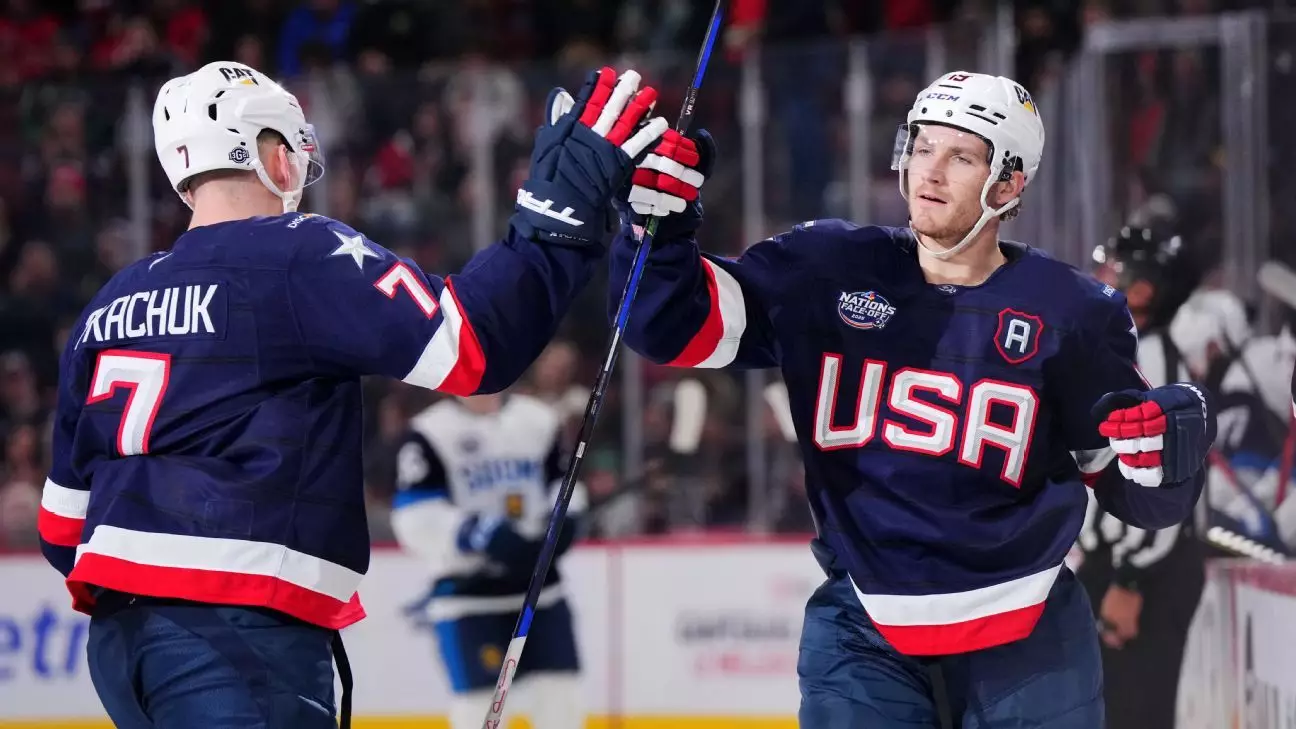In the world of sports, few events can rival the intense rivalry between Canada and the United States, particularly in hockey. The NHL 4 Nations Face-Off championship game recently showcased not only the athletic prowess of both nations but also the pervasive influence of politics. Amid the excitement surrounding the tournament, President Donald Trump’s involvement became a focal point, raising questions about the role of political figures in sport and how their influence can amplify national pride and rivalry.
The phone call made by President Trump to Team USA prior to the championship game sparked a flurry of reactions from players and fans alike. For many athletes, receiving a call from the President of the United States is an unforgettable experience marked by pride and validation. Team USA forward Vincent Trocheck described it as one of the “cooler experiences” of his career. However, one must consider the implications of such interactions. Although these calls might boost morale and create a sense of unity among players, they inadvertently intertwine sports with the political narrative surrounding nationalism. Players expressing their excitement about the President’s support can be interpreted as a form of endorsement for the political climate existing at the time, thereby complicating the relationship between sportsmanship and political sentiment.
The lead-up to the game saw tension manifest in the form of fan reactions, particularly during national anthems. Instances of booing and jeering during these patriotic moments are emblematic of the prevailing political climate between the two nations. This division not only spills over into the sporting arena but also magnifies the atmosphere of competition. The recent matches have ignited a frenzy of emotions, emphasizing how a sport as beloved as hockey can also serve as an arena for the display of national pride, potentially leading to confrontations among fans and players alike.
The clashes on the ice can no longer be seen solely as contests of athletic skill but also as representations of deeper cultural and political schisms. The aggressive play seen in the first encounter, marked by fights within the first few seconds, speaks volumes about the intensity of emotions at stake. Winning is not just about the trophy; it’s about national pride. Coach Jon Cooper of Team Canada acknowledged the complexity that comes with being part of this rivalry. He noted that while the political backdrop influences the atmosphere, the primary focus should remain on competing successfully in the game itself.
In an era dominated by social media, the reach of political statements becomes significantly amplified. Trump’s comments on “Truth Social” regarding Canada potentially becoming the “51st state” serve as an example of how political figures can influence public perception through digital platforms. These statements can rally support among certain demographics, and at the same time, they can provoke backlash, particularly from a rival nation. The intersection of sports and politics allows for a broad range of interpretations, where comments can be viewed with nationalistic fervor or as detrimental to diplomatic relations.
As the lines between sports and politics continue to blur, it becomes increasingly critical to examine how these two spheres interact. The excitement of a hockey game serves as a backdrop for exploring national pride and rivalry — all amplified by the influence of political figures. The recent NHL 4 Nations Face-Off championship not only showcased the talent on ice but also highlighted the extraordinary capacity of sports to capture the zeitgeist of political sentiments. Moving forward, it is essential for both athletes and fans to navigate this new reality thoughtfully, recognizing that their actions and emotions may resonate far beyond the rink, intertwining with the broader narrative of national identity and inter-country relations. The passion associated with sports is undeniably powerful, but it must be balanced with an understanding of its implications within the sociopolitical landscape.

